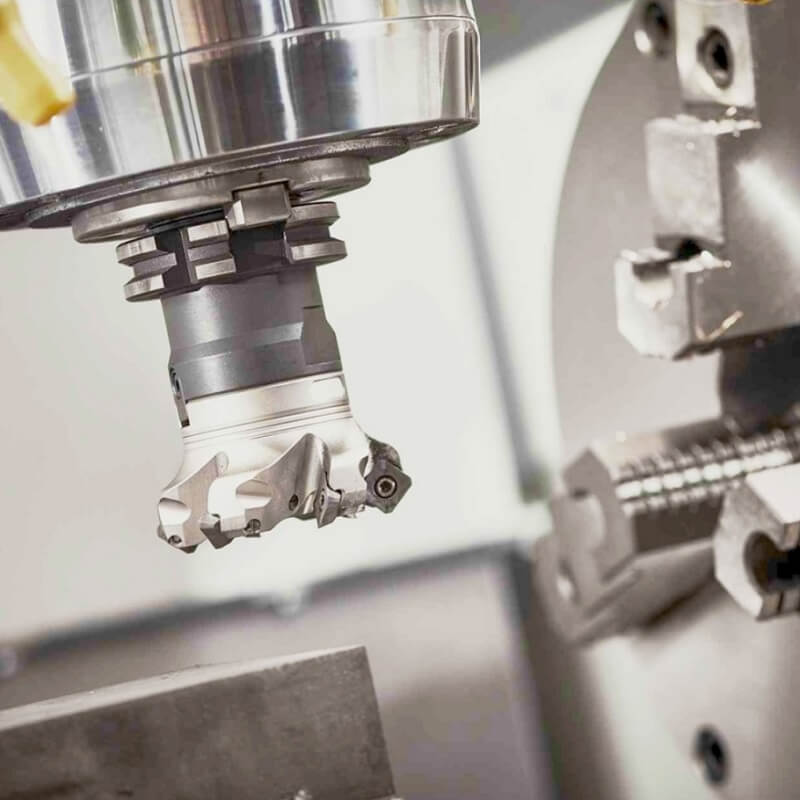
The manufacturing world is undergoing a digital transformation. With the integration of Artificial Intelligence (AI) and Smart Machining technologies, traditional tooling components like milling inserts are evolving to meet modern machining demands. These advancements are not just about automation—they're about smarter, more adaptive, and highly optimized cutting solutions. In this article, we explore how AI and smart systems are influencing the design and performance of milling inserts.
AI in manufacturing isn't just theoretical anymore—it's practical, powerful, and profitable. AI-driven CNC machines can collect, analyze, and respond to real-time data, allowing for dynamic decision-making during operations. As a result, cutting tools like milling inserts must adapt to this level of intelligence, both in design and functionality.
Predictive maintenance
Real-time tool wear analysis
Adaptive feed and speed control
Automated process optimization
As AI-equipped CNC machines become standard in high-precision industries, milling insert manufacturers are redesigning their products to match the new level of demand. Here's how:
Some next-gen milling inserts come embedded with micro sensors that detect temperature, vibration, and wear levels. This data helps machines self-adjust cutting parameters or alert operators before tool failure.
AI-powered systems often adjust cutting paths in real time. To match this, insert geometries are being re-engineered for multi-directional force stability, better chip evacuation, and heat dissipation under fluctuating loads.
AI models now simulate and test coating behaviors under various environments. This leads to the use of nano-coatings or multi-layered coatings that provide longer tool life and consistent performance, even under variable speeds.
AI-powered CAM (Computer-Aided Manufacturing) software continuously optimizes toolpaths to minimize cycle time and material waste. This requires inserts that:
Handle high-speed intermittent cuts
Deliver uniform performance across toolpath variations
Maintain dimensional accuracy over longer runs
Insert designs now factor in non-linear tool engagement and adaptive load distribution, both outcomes of AI-driven machining.
Real-time machine learning allows systems to adapt during operation. Milling inserts must now:
Be made from materials that endure frequent micro-adjustments
Maintain edge integrity during variable feed rates
Resist wear under rapidly changing spindle speeds
As machines get smarter, adaptive tooling solutions—including inserts—are being optimized for predictive feedback loops that allow seamless, automatic compensation.
Looking ahead, the integration of AI and IoT (Internet of Things) will further refine milling insert technology. Expect to see:
Cloud-connected insert tracking
AI-guided automatic tool replacement alerts
Fully self-monitoring inserts with embedded data chips
These innovations promise lower operational costs, higher efficiency, and reduced downtime, making milling inserts an integral part of Industry 4.0 and smart factories.
AI and smart machining are not just transforming how we run CNC operations—they’re reshaping the very tools we use. Milling insert design is becoming more intelligent, durable, and responsive, aligning with the data-driven future of manufacturing. To stay competitive, companies must embrace these changes, investing in AI-ready cutting tools that can keep up with the speed of innovation.
Contact person: Steve Lee
E-mail: [email protected]
Phone: 86-731-22200908
Address: Floor 4,Building NO.15,Zhichuang Plaza,NO.1299,Liyu Road,Tianyuan District,Zhuzhou City, Hunan, P.R. CHINA
Tel:0086-19973342799
E-mail: [email protected]

WeChat Official Account